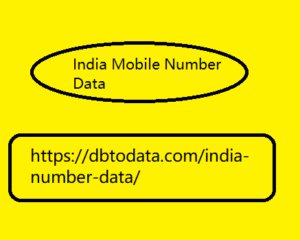Post by account_disabled on Mar 10, 2024 9:09:05 GMT
Since its birth, the network has favored the dissemination of tools necessary to allow an increasingly wider audience to create digital objects: photos, videos, texts, which were previously difficult for non-experts to produce. A similar movement to democratize production tools is also occurring in the software space. For some years now, web based solutions have been multiplying that allow those who are not developers to easily create code to solve specific problems. For marketers, this means being able to do their job faster without having to wait for help from colleagues in the IT department. In fact, this will drastically increase the production of “bottom-up” martech solutions. The first product that, in some way, helped transform marketers into small developers was Excel.
Microsoft's spreadsheet with its programmability features (macros) has transformed India Mobile Number Data the most willing marketers into creators of dashboards and advanced functions. Today, however, it is also possible to do more with software defined as "low code" or "no code" (LCNC), i.e. designed with the main purpose of giving non-developers the tools to build applications, therefore logic, without programming or with a minimal use of code. Delimiting this market space is not easy, but three types of application solutions can be identified that characterize it: those that help generate automation, those that allow data to be manipulated and those that are used to build graphic elements. Applications to automate tasks Among the software that allows different services to communicate with each other, through rules that can be set by the user, we find IFTTT , Zapier , Parabola .

These are iPaaS (integration platform as a service) products with which you can create actual "recipes" or sequences of instructions for one or more connected services. To do this, just use a graphical interface, therefore without the need to write code, and define a trigger event involving a service and a resulting action generated in another service. For example: collect all the names of the accounts that mention the name of a certain brand in a Google Docs, to then be able to use them in engagement activities or send an email to fellow sellers every time we bookmark an interesting tweet, in order to to encourage them to read useful news. Furthermore, more complex workflows can also be created made up of multiple phases generated by a single triggering event, in an “if…then” type sequence (called “event-driven programming”). For example, when a person downloads a company resource, and meets certain qualification requirements, it is possible to automatically update the CRM and alert a sales representative via email or instant messenger.
Microsoft's spreadsheet with its programmability features (macros) has transformed India Mobile Number Data the most willing marketers into creators of dashboards and advanced functions. Today, however, it is also possible to do more with software defined as "low code" or "no code" (LCNC), i.e. designed with the main purpose of giving non-developers the tools to build applications, therefore logic, without programming or with a minimal use of code. Delimiting this market space is not easy, but three types of application solutions can be identified that characterize it: those that help generate automation, those that allow data to be manipulated and those that are used to build graphic elements. Applications to automate tasks Among the software that allows different services to communicate with each other, through rules that can be set by the user, we find IFTTT , Zapier , Parabola .

These are iPaaS (integration platform as a service) products with which you can create actual "recipes" or sequences of instructions for one or more connected services. To do this, just use a graphical interface, therefore without the need to write code, and define a trigger event involving a service and a resulting action generated in another service. For example: collect all the names of the accounts that mention the name of a certain brand in a Google Docs, to then be able to use them in engagement activities or send an email to fellow sellers every time we bookmark an interesting tweet, in order to to encourage them to read useful news. Furthermore, more complex workflows can also be created made up of multiple phases generated by a single triggering event, in an “if…then” type sequence (called “event-driven programming”). For example, when a person downloads a company resource, and meets certain qualification requirements, it is possible to automatically update the CRM and alert a sales representative via email or instant messenger.
